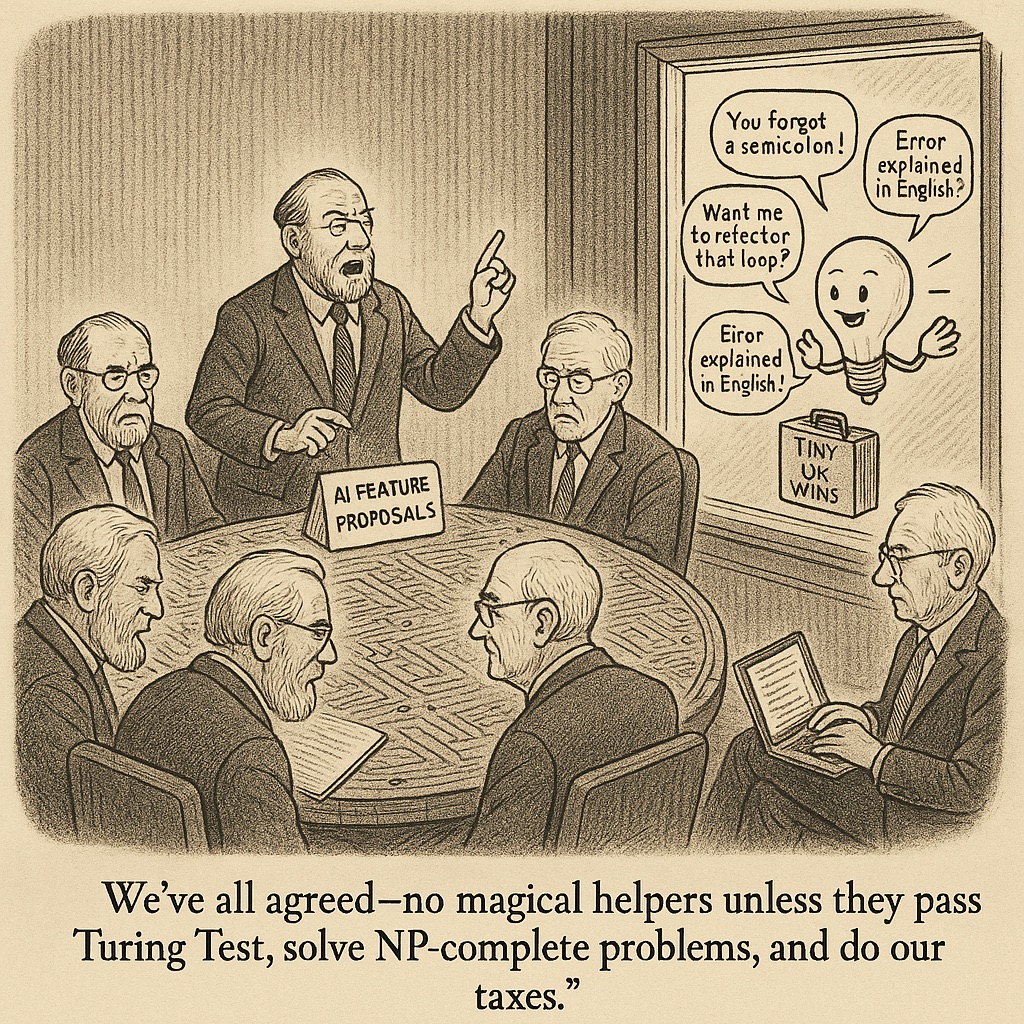Why Senior Engineers Overlook Small AI Wins
TL;DR >> Senior engineers often dismiss small AI coding power-ups (like smarter autocomplete or better error messages), not realizing these tweaks can totally change how users feel about a product. <<
Senior engineers have to talk themselves into coding some things… but with AI, I just start writing a wishlist in the text box and send it off. Thorsten Ball
There’s a curious phenomenon happening.
The most experienced developers—those who’ve built systems from scratch, debugged the impossible, and shipped products that millions use—are often the most skeptical about AI coding tools.
I call it the AI blind spot: a gap in perception between what senior engineers see as valuable and what actually transforms user experiences.
The main reason is that they aren’t using enough AI themselves.
When you don’t use AI daily, you miss the subtle ways it transforms the way we think.
Without these experiences, AI features seem like toys—nice-to-haves that junior developers might enjoy but that “real” engineers don’t need.

But here’s what this mindset misses: when you become AI-native in your own workflow, you start seeing opportunities everywhere.
Developers who use AI to enhance their own workflow often discover opportunities to extend AI’s benefits directly to their end users. What begins as an internal productivity tool frequently evolves into inspiration for user-facing features.
This pattern of insight — where hands-on experience with AI in development naturally leads to identifying valuable AI applications for users — demonstrates how practical exposure to AI capabilities can spark innovative product improvements.
This is why the AI blind spot matters.
Senior engineers who haven’t integrated AI into their daily practice can’t imagine its impact on users. They evaluate AI features through the lens of traditional software metrics—performance, scalability, maintainability—instead of through the lens of transformed experiences.
Experiencing AI’s capabilities firsthand fundamentally shifts how developers envision potential applications. Those who remain distant from AI often view it through the lens of incremental improvements to existing features.
Then everything else looks like a black and white movie… It's hard to explain to people what you saw. Thorsten Ball
In contrast, developers who regularly work with AI tools understand their transformative potential and can more readily imagine applying similar intelligence throughout their applications. This experiential difference leads to divergent views on AI’s value — from seeing it as a minor optimization to recognizing it as a powerful tool for reimagining core user interactions.
The most successful products of the next decade won’t be the ones with the most sophisticated AI. They’ll be the ones built by developers who are AI-native themselves—who understand viscerally how small AI improvements compound into magical experiences.
Senior engineers need to become power users of AI tools not just to code faster, but to develop the intuition for where AI can transform their products.
How to Break Through the AI Blind Spot:
- Try building something end-to-end with an agent.
- Let it fail—then redirect.
- Work on your own repo, with real bugs.
- Don’t treat it like Stack Overflow—treat it like an intern.
Once you experience AI improving your own workflow, you’ll never again underestimate its power to delight your users.